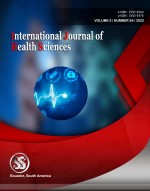Explicating Martin Heidegger's "Dasein" as being-in-the-world
Keywords:
Being-with-others, Being-as-care, Existentiality, Facticity, FallennessAbstract
In a bid to carry out the philosophical analysis of man, Heidegger employed the term "dasein" which is in line with his characteristic philosophical system. Meanwhile, Heidegger invented various terminologies in his existential analysis of human existence. The human existence posited for him two possible modes of existence: authentic and inauthentic modes of existence. In authentic existence, man fully attained consciousness of the self which leads to self-realization and eventual self-actualization and fulfillment. On the contrary, inauthentic existence cripples an individual person within the ambiance of "they" and the individual's ownmost potentiality-for-being remains in the "they". Nevertheless, Heidegger postulates that although man is thrown into the world with all its facticity and limitations, yet he has all the possibilities of attaining an authentic existence or decides to remain in inauthenticity of existence. The writer primarily focuses on the methodological approach of philosophical appraisal as a necessary measure to perfect objective of the study. The researcher finally comes to a conclusion that man is a being in the world in the midst of unavoidable limitations and facticity.
Downloads
References
Akam, J. B. (1989) "Unpublished Lecture on Metepysics", Bigard Memorial Seminary, Ikot-Ekpene.
Aquinas, T. (1989) "Questione Disputate De Potentiae", in Akam J. B., Unpublished Note on Metepysics, B. M. S. Ikot-Ekpene.
Arendt, H. (1958) "The Human Condition", Chicago University Press, Chicago.
Aristotle, (1961) "Physics", trans. Richard Hoge, Lincoln University Press, Lincoln.
Buber, M. (1954) "I and Thou ",trans. Smith R. C., 2nd ed. Macmillan Press, New York.
Christos T. (2019) "Chapter 2 The Question of Being", Springer Science and Business Media LLC.
Greece, M. (1957) "Heidegger Martin ", Book and Row, London.
Grimsley, R. (1960) "Existential Thought", Cardiff Press, Great Britain.
Heidegger, M. (1962) "Being and Time", trans. Macquarie J. and Robinson R., Camelot Press, Great Britain.
Hodgson, N. (2016) "1933, Or Rebirth", Citizenship for the Learning Society.
Luipjen, W. A. and Koren, J. H. (1985) "Existential Phenomenology", Duquesne University Press, Pittsburgh.
Macquarie, J. (1986) "Heidegger Martin", Luther Worth Press, London.
Magda, K. (1965) "Heidegger's Philosophy: A guide to his Basic Thought", Macmillan Press, New York.
Wido, A., Bajamal, A. H., Apriawan, T., Parenrengi, M. A., & Al Fauzi, A. (2022). Deep vein thrombosis prophylaxis use in traumatic brain injury patients in tropical climate. International Journal of Health & Medical Sciences, 5(1), 67-74. https://doi.org/10.21744/ijhms.v5n1.1840
McKeon, R. (1941) "The Basic Works of Aristotle", Random House, New York.
Mmadudiri, E. C. and Onwuatuegwu, I. N. (2020) "Martin Heidegger's Concept of Fallenness: An Expository Analysis", Quest Journals: Journal of Research in Humanities and Social Science, 8(6): 33-39.
Molina, F. R. (1969) "The Source of Existentialism as Philosophy", Prentice Hall, New Jersey.
Roger F. (2021) " Toward a Religious Institutionalism: Ontologies, Teleologies and the Godding of Institution ", Emerald.
Suryasa, W. (2019). Historical Religion Dynamics: Phenomenon in Bali Island. Journal of Advanced Research in Dynamical and Control Systems, 11(6), 1679-1685.
Schmid, H. B. & Thonhauser, G. (Ed's.) (2017) "From Conventionalism to Social Authenticity: Heidegger's Anyone and Contemporary Social Theory", Springer Science and Business Media LLC.
Stumpf, S. E. (1983) "History and Problem of Philosophy 3rd ed.", McGraw-Hill, New York.
Warnock, M. (1970) "Existentialism ", Oxford University Press, London.
Published
How to Cite
Issue
Section
Copyright (c) 2022 International journal of health sciences

This work is licensed under a Creative Commons Attribution-NonCommercial-NoDerivatives 4.0 International License.
Articles published in the International Journal of Health Sciences (IJHS) are available under Creative Commons Attribution Non-Commercial No Derivatives Licence (CC BY-NC-ND 4.0). Authors retain copyright in their work and grant IJHS right of first publication under CC BY-NC-ND 4.0. Users have the right to read, download, copy, distribute, print, search, or link to the full texts of articles in this journal, and to use them for any other lawful purpose.
Articles published in IJHS can be copied, communicated and shared in their published form for non-commercial purposes provided full attribution is given to the author and the journal. Authors are able to enter into separate, additional contractual arrangements for the non-exclusive distribution of the journal's published version of the work (e.g., post it to an institutional repository or publish it in a book), with an acknowledgment of its initial publication in this journal.
This copyright notice applies to articles published in IJHS volumes 4 onwards. Please read about the copyright notices for previous volumes under Journal History.
















